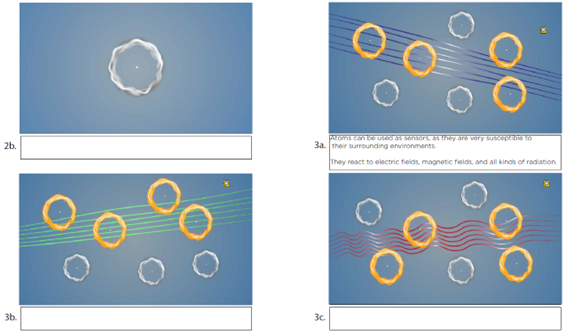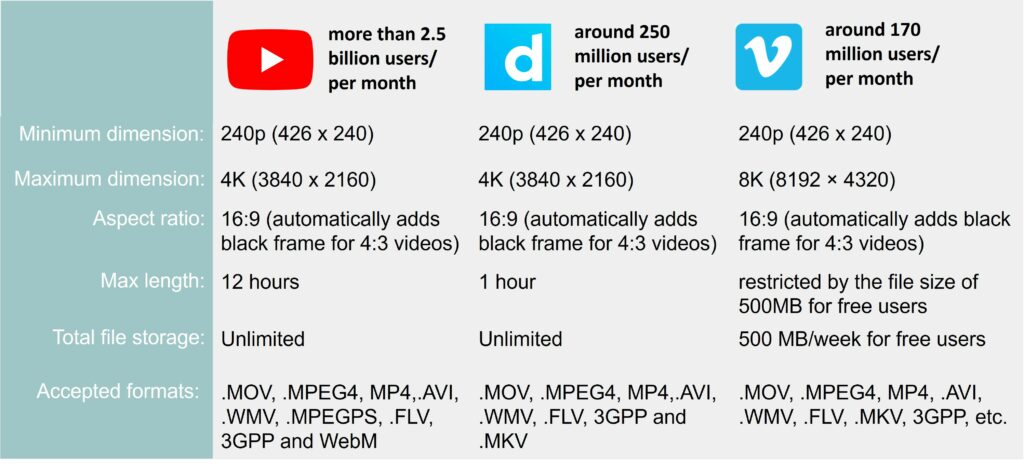Communicating research through videos – a compact guide on planning and production
21st February 2023 at 5:16 pm
In the first part of our blog entry dedicated to online videos, we focused on the most popular types used in EU-funded projects that build on storytelling and explore new avenues for communicating research. With this blog post, we will not only guide you through the process of creating such videos but also share tips on distribution ways to ensure a wide outreach. As much as it may seem that modern technology and accessibility of recording devices, also integrated into our smartphones, makes video creation a simple task, the time needed to develop a meaningful audio-visual story should not be underestimated. Thorough planning beforehand will save you some precious time in the production phase. As experts leading communication, dissemination and exploitation activities in more than 30 Horizon 2020 projects and 11 Horizon Europe projects, our team has had numerous occasions to develop impactful videos in different scientific fields. And we are happy to share our knowledge with you.
Have a clear objective
The first point to consider is the aim of the video. It should not only align with the communication objectives of your project, but it should complement the ongoing work. Is there a major deliverable in the pipeline, a key publication or a critical milestone? Building on already planned activities and using synergies will increase the outreach of the video and considerably contribute to meeting the project’s communication and dissemination objectives. For example, in health projects that involve research studies – an explanatory video can serve as an excellent way to inform the public and support the recruitment of potential participants. With the objective(s) defined, decide on the type of video best suited to successfully achieve these. Consult our list from the previous blog post for inspiration.
Identify your target audience
With the video’s goal established, be it increasing the visibility of your research, explaining the scientific methodology or informing about the enrolment to the clinical trials, the next vital step is to identify who the audience is. One valuable resource to reach to would be your Plan for Dissemination and Exploitation, including Communication activities (PDEC), where you portray relevant stakeholder groups together with their interest in and expectations towards the project. With the stakeholders’ map, it is easier to navigate among various groups and narrow down the audiences you want to address with the specific video. Having identified the target groups, note the key messages you want to convey to them. This step is of high importance as based on the target audience and key messages, you will define the content of your video.
Decide on the content
Who?
A brainstorming session is always a good starting point to ensure that the partners’ visions align with the video’s goal and the stakeholders’ expectations. With large consortia of many partners, this process can quickly become overwhelming due to the abundance of diverse ideas. Thus, a key point is to define a core team depending on what the video’s objective is. For example, when developing the above-mentioned explanatory video on clinical studies, we formed a core team including the coordination and communication partners, a patients’ association and clinicians, and then began brainstorming. Once you agree on the team best suited for the task, plan an efficient collaboration by assigning clear roles and responsibilities, scheduling dedicated meetings and deciding on the tools you will use in the process.
How?
You can organise an online session with a collaborative space for sharing ideas, such as Miro, or use an opportunity to exchange perspectives and note key points during in-person meetings. Noting ideas in an organised manner will help you to smoothly move into script writing – the first practical and crucial step towards video production. Yes, that is correct – you are now beyond the planning phase.
Regardless of what video type you decided on, be it an explanatory, educational or presentation video, script writing not only ensures that the key messages are conveyed, but it helps to build a compelling story within a given time frame. Start with a brief outline of the video to not lose the focus and only then move into a full-size script. The simple rule is to build your story on two levels simultaneously: audio/narration and video/action. We have set up a template below.



While writing the script, the visual part might become clearer and clearer. If so, consider taking one step further and creating a storyboard, a graphical representation of the narrative that shows how your video will unfold, scene by scene, or in some cases shot by shot. You can think of it as sort of a comic book version of your script. Storyboards are mostly used in animated videos providing an enhanced preview of the animation and allowing adjustments before putting efforts into the often very time-consuming production process.

Decide how your video will be made
Related to the video type is the way how the video is going to be made and what resources and tools are needed for the actual production to take place. Depending on the video type, the filming equipment that might become handy includes a camera, microphone, tripod and, in some situations, additional lights, or in the case of an animated video – animation software. If you decided on a real-life production, think of the occasion on which the filming can occur. Consortium meetings are an excellent opportunity to interview the partners or discuss project-related topics of interest to your audience. Moreover, consider the space in which the filming will be done. Two points to keep in mind are background noise and natural light. Making an effort to limit the former and ensure enough of the latter will make the editing part much easier.
As for animation, numerous animation software is available on the market, including free ones that also offer a library of templates to build up an engaging story. Online platforms like Biteable or Animaker with easy drag-and-drop functionalities and an intuitive interface help beginners create visually appealing videos. Though not free, a combination of two programmes from Adobe Inc., Adobe Animate to create the graphics and Adobe After Effects to animate them is a widely used approach by non-beginners.
Last but not least, depending on the platforms you will use to publish your video, the file format, length and size may vary. Therefore, once you have the material recorded and ready for post-production, consider how the video will be published.
Decide on the hosting platform and boost the outreach through different distribution channels
The most popular and free platforms for video hosting are YouTube, Dailymotion and Vimeo with similar technical requirements for the uploaded videos but with different outreach potential. With more than 2.5 billion active users as of 2023, YouTube is the world’s largest video-sharing platform and second-largest social media.

As much as the length of the video depends on its type and the goal, the rule of thumb is the shorter the better, especially if you plan to publish the video also on social media platforms. It does not mean that you must cut down on vital points but keep it concise and interesting for the viewers. For example, YouTube videos between six and eight minutes are viewed the most, while a recommended length across different platforms is 2-5 minutes.
Once your video is published, make sure to link it to different outlets, including the project’s social media accounts, such as LinkedIn, Facebook, Twitter or Instagram, blogs, websites, relevant forums etc. This will increase the outreach of the video and generate traffic to the other communication channels used in your research project. Moreover, not to miss out on the opportunities given by more traditional media channels, like television, it is important to make the final video available to all consortium members. Distributing the video among partners will make it easier for them to use it on various occasions, including presentations at international conferences or displaying it on screens at institutions, or clinical centres.
Find the expertise and support you need
Including a work package dedicated to communication and dissemination at the proposal stage with knowledgeable partners involved, proves to be the best way to safeguard the required skills and support throughout the project implementation, including the development of impactful videos. With a passion for making science more accessible to all, we at accelopment are partners leading the communication, dissemination and exploitation activities in numerous research and innovation projects. We are glad to share our knowledge and experience gathered over years through regular dissemination blog posts. Alternatively, contact us to find out how we can support your project’s communication activities!

Joanna Plesniak
Project Manager Communications
